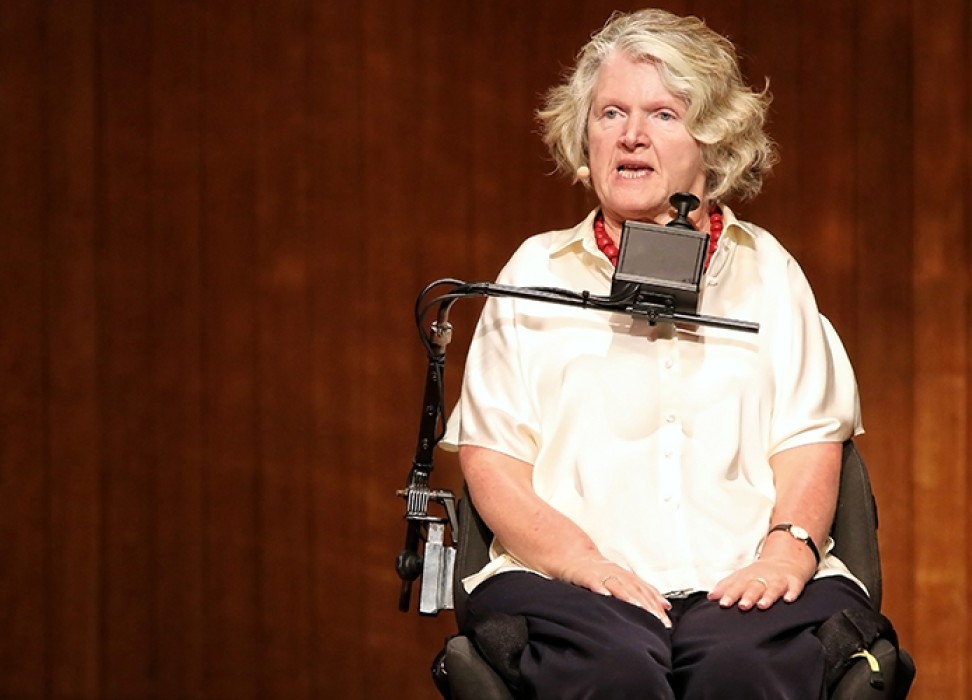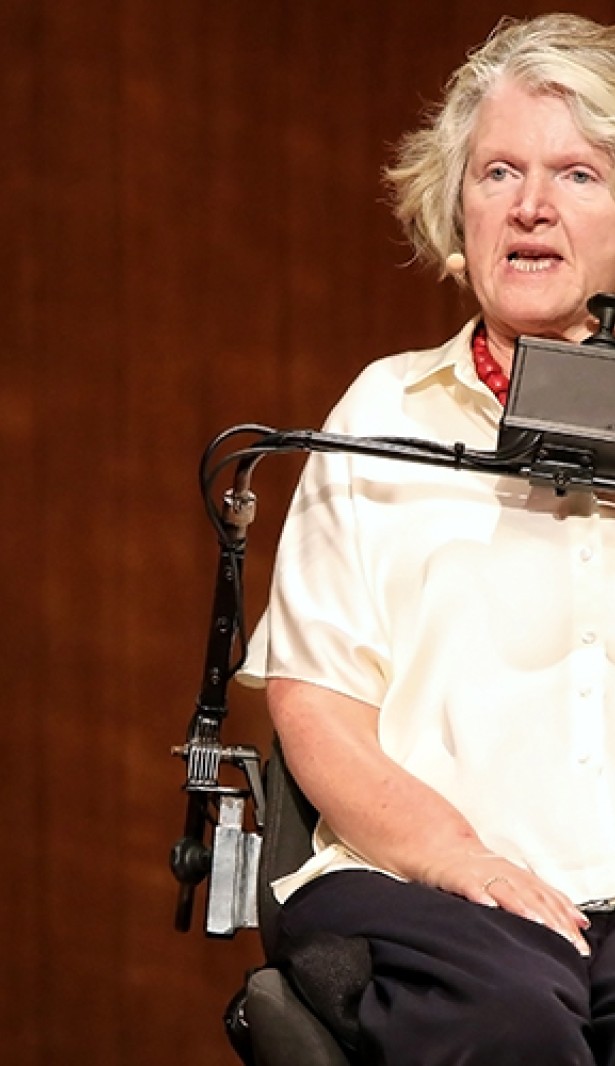Months in fear, anxiety and confusion: the life of people with disabilities in COVID-19
09 June 2020

Rosemary Kayess, the Vice Chair of the UN Committee on the Rights of Persons with Disabilities, has not left her house in Sydney, Australia for more than three months. She knows, quite simply, that the world outside is no longer safe for her.
The human rights lawyer and 2019 Australia Human Rights Medal winner had been following the news of COVID-19 since January. So when the University of New South Wales, where she works, officially instructed its staff on 26 February that they should work from home if possible, Kayess followed the advice and has remained home 24/7 ever since.
“My spinal cord injury means that I’m at very high risk in relation to COVID-19, which affects lungs and airways. My chest and back muscles are paralysed, which makes coughing difficult. Any respiratory illness which leads to a build-up of mucus is life threatening for me,” Kayess said.
But while Kayess realized that it was crucial to stay home, she didn’t expect to feel so helpless.
“There was constant anxiety as I couldn’t physically distance from my support people, and we were unable to access personal protective equipment such as masks and hand sanitizers,” said Kayess.
The Australian Health Protection Principal Committee, the key decision making body comprised of state and territory chief health officers, unveiled in mid-February an emergency response plan for COVID-19. Under the plan, healthcare workers and aged-care support workers were ensured access to personal protective equipment. People with disabilities and disability support workers, however, were not included in the protection measures.
“Two of my support workers had purchased reusable masks during the bushfires that had burned over the Australian summer, so they did have those to use initially,” Kayess explained. “However, I couldn’t obtain any others for the other two support workers. They had to go to different pharmacies and stores, and were reduced to begging for masks to use, and trying to persuade pharmacists and store managers that they needed to protect the people with disabilities they worked with.”
At the same time, panic buying amid fears over coronavirus made the situation even more challenging. “It was extremely difficult to obtain toilet paper, hand wash, and disinfectant. They were critical to maintaining infection control within my home and among my support team,” she said. “We spent a lot of time sourcing these items, increasing my anxiety, risk and vulnerability.”
Unprecedented challenges
The omission of people with disabilities from the emergency response plan prompted significant advocacy from the disability community, and the Australian Government eventually set up a disability advisory group in April to develop a disability-specific COVID-19 plan - two months after the release of the initial plan.
“During these two months, people with disabilities had little or no targeted accessible information about the virus symptoms, and how to protect oneself, such as how to physically distance when support workers are required to assist with personal care. Also, Australian Government announcements didn’t include sign-language interpretation initially. The lack of accessible resources and information resulted in high levels of fear, anxiety and confusion,” Kayess recalled.
She found the implementation of general public health orders further exacerbated the restrictions that people with disabilities already experience in residential care facilities. “People with disabilities were locked in their rooms for long periods of time and stopped from going outside the facilities at all, and even after government restrictions were eased, some facilities still totally banned visitors, including family and friends,” Kayess added.
These challenges are unprecedented and have made people with disabilities feel especially vulnerable, according to Kayess.
“Like many in the disability community, I felt under siege. I didn’t feel in control of my situation,” she said.
Kayess, who has devoted her career to human rights and disability law and policy reform, always had an independent life before COVID-19. She worked four days a week at the university, and extensively travelled internationally for her work. Her favorite leisure activities involved going to local restaurants or craft beer breweries with friends, and playing trivia every Tuesday night at a local pub.
She continues to work from home but the work has become more COVID-19-related, such as preparing statements to address the absence of people with disabilities in responses to the pandemic.
Governments in Australia are now implementing the disability-specific COVID-19 plan, and providing greater health protections for people with disabilities. The challenges faced by people with disabilities indeed are not exclusive to Australia.
Pre-existing inequality and discrimination
The COVID-19 pandemic has revealed that the Convention on the Rights of Persons with Disabilities (CRPD) has not been comprehensively implemented by the countries that have ratified it.
“The exclusion of people with disabilities from the pandemic response is the result of pre-existing inequality and discrimination based on ableism, the view that disability is ‘abnormal’ and able-bodied is ‘normal’. This devaluing of people with disabilities is embedded in law, policy and practice, prejudicing the decisions about who is deserving of critical health care and life saving measures,” Kayess stressed. “The ableism I write about in my professional capacity became a frightening and damning reminder that I am dispensable in order to save ‘real’ people.”
“People with disabilities are not inherently vulnerable; it is attitudinal, environmental and institutional barriers that result in higher levels of vulnerability. People with disabilities may have underlying health conditions that make them more at risk of contracting, experiencing complications and dying from COVID-19, but this risk is multiplied by inequality and discrimination.”
Looking beyond the pandemic, it is critical that CPRD is the standard for disability inclusive planning and recovery measures, says Kayess, adding that for the Committee, “It’s essential for countries to adopt a human rights approach and to take action now to build equitable, sustainable and resilient societies to prevent and respond rapidly to future public health emergencies – for everyone.”
The Committee has recently adopted a COVID-19 statement, which is available online.
9 June 2020
